In early 1921, Billy Mitchell seemed to be winning his war on the US Navy. He had convinced the press and thus the public that aircraft could easily sink a battleship, a claim he intended to demonstrate during the upcoming trials on the former German battleship Ostfriesland. This would allow him to wrest naval aviation from the USN and create a separate Air Force, which he would be the logical choice to lead. It would be a masterstroke in the political battles over service supremacy.
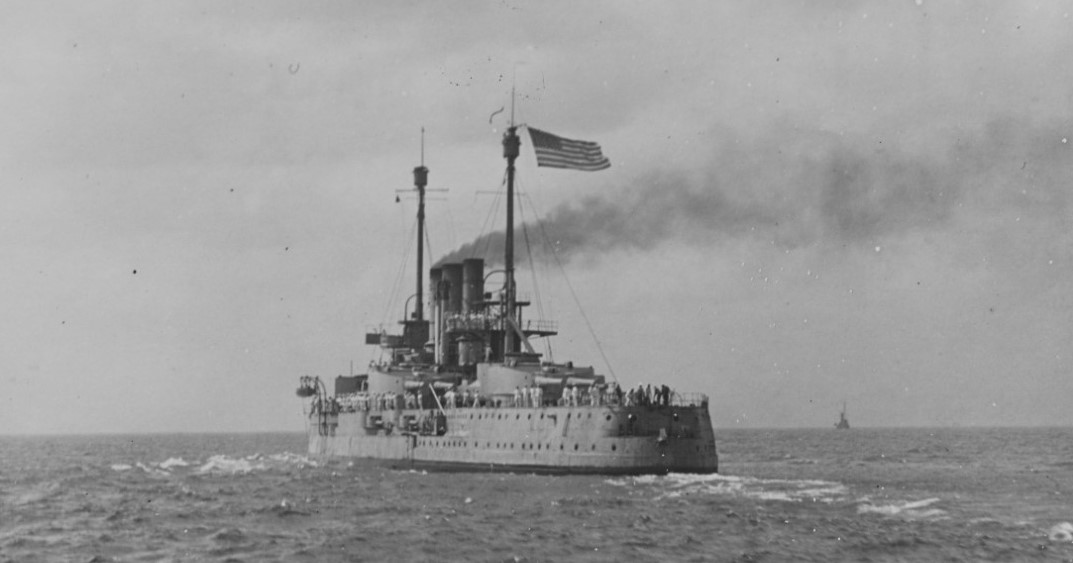
Ostfriesland flying the US flag
Mitchell suffered a major defeat in April, when President-Elect Harding backed a proposal to create a separate Bureau of Aeronautics within the Navy. At the end of WWI, the Director of Naval Aviation had been demoted to a position within the CNO's1 office, greatly reducing its prestige within the Navy.2 The creation of a separate bureau would ensure naval aviation's independent existence, as it placed it on the same footing as such fields as ordnance and engineering. This was a major blow to the campaign for unification, as the Navy's aviators now had the backing they felt they needed, and the example of the absorption of the Royal Naval Air Service into the newly-formed Royal Air Force made the USN's aviation community wary of wedding itself to the Army Air Service.
The Navy also managed to score a victory in the setup of the Ostfriesland test. To careful observers, the idea of aircraft sinking an anchored, empty battleship wasn't particularly outlandish. The problem was that nobody had a good handle on the issues attacking a ship at sea was likely to raise, and the terms for the trials included three separate phases designed to investigate the issue. First, aircraft would try to locate ships at sea and concentrate a striking force against them. Second, they would test their ability to hit a ship underway in the absence of AA fire. Thirdly, the captured German ships would be used to investigate the effects of bombs on modern warships. This meant that the bombs would be dropped one at a time, with a group of observers going aboard after each hit to investigate the damage. The Navy would be in overall command of the tests, while Mitchell would command the 1st Provisional Air Brigade, the bulk of the Army's contribution.
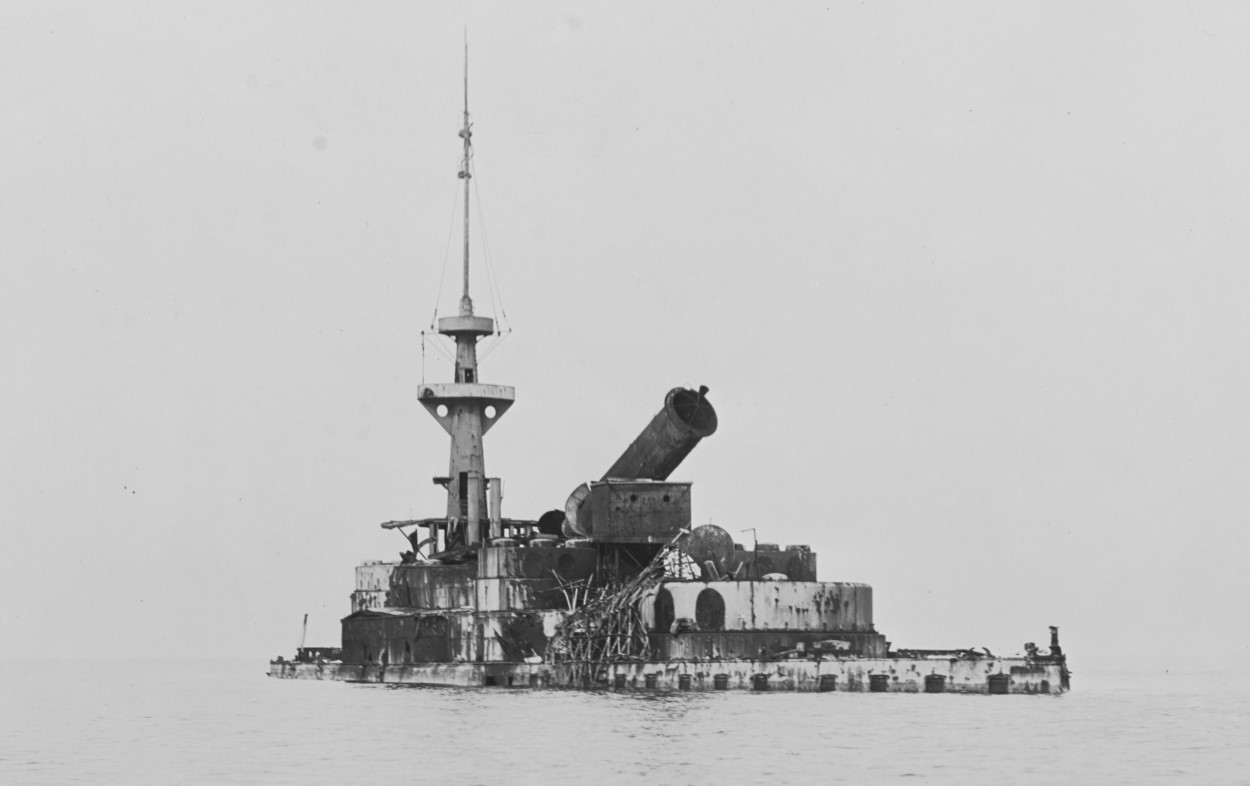
Indiana beached after her service as a target
Mitchell was horrified by these restrictions, and even had one of his officers investigate if it was legal for the Navy to issue him orders. He was also furious when the Navy convinced senior Army officers to order all participants not to speak to the media, a precaution well justified by Mitchell's earlier antics. These included getting a newsreel crew to film practice bombings on the beached Indiana, with the implication that all of the damage had been done by the Army's attack. The Navy actually requested Mitchell be relieved, but ultimately Secretary of War Weeks decided against it, a decision he would later regret.
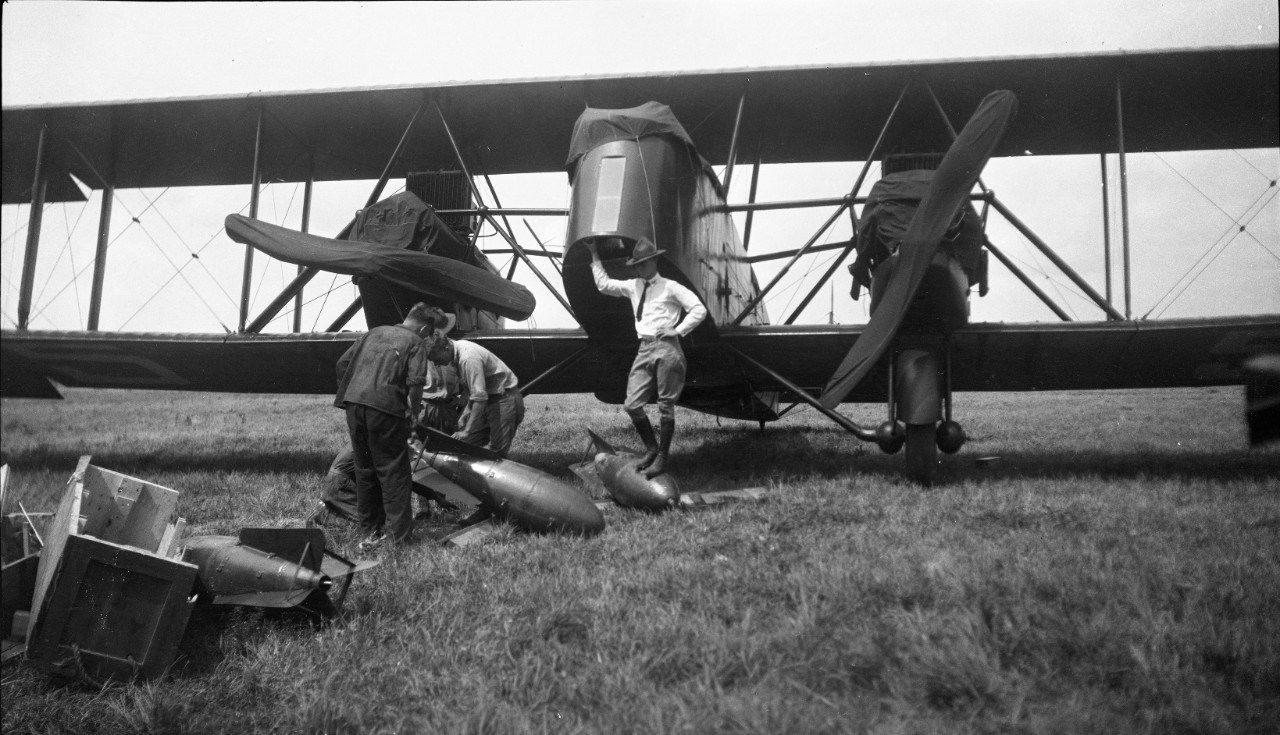
Ordnance being loaded aboard an MB-2 bomber
The battleship tests opened with the search mission, although it had to be delayed two days to make sure of good flying weather. The target would be the former battleship Iowa, now converted with radio-control equipment to serve as a moving target for air and surface forces. She would be accompanied by the pre-dreadnought Ohio, serving as a control ship. After the forces located her, they would concentrate and attack with practice bombs, the only attacks on a moving target during the entire test. Iowa would be somewhere in a 220-nautical mile stretch of coast, between 50 and 100 miles offshore. Mitchell initially declined to participate in the test, citing the risk to his aircraft. This wasn't an idle worry. The Martin MB-2s that would bear the brunt of the bombing had a rawhide gear in the fuel pump that tended to stop working after about two hours.3 With a cruising speed of 91 miles per hour, the MB-1 couldn't really be used for searching for ships at sea, or even for attacking them if they were more than 50 or so miles offshore. He later asked that the test be moved closer to shore, on the grounds that it was a test of bombing accuracy, but this was correctly denied by the Navy, and Mitchell then agreed to provide a trio of Army blimps to back up the Navy seaplanes that would conduct the search.
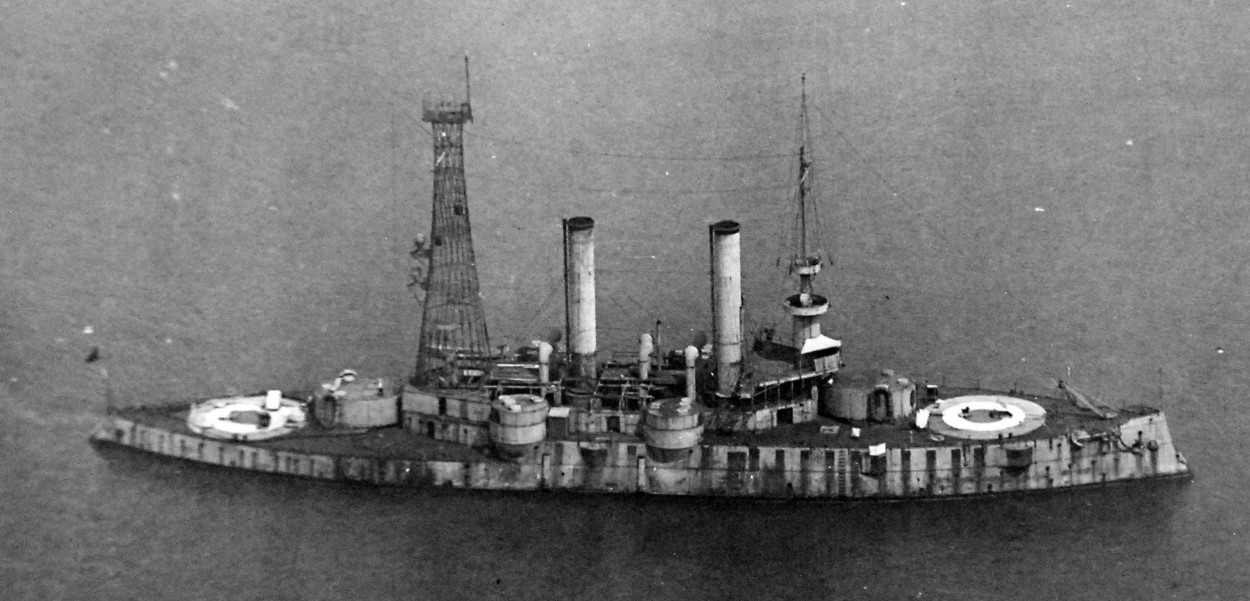
Iowa located by airship D-21
The test itself was carried out on June 29th, 1921, and it took only two hours for one of the Army blimps to locate Iowa, although radio issues meant that the first report received on the ground came from a Navy plane. The seaplanes then attacked the remote-controlled battleship, which was making only 6 kts, and scored only a handful of hits with their 85 practice bombs. Most of the misses clustered around the bow, which suggested that the main problem was overestimation of Iowa's speed. If the pilots had merely aimed at her bow, the hit rate would have been much higher.
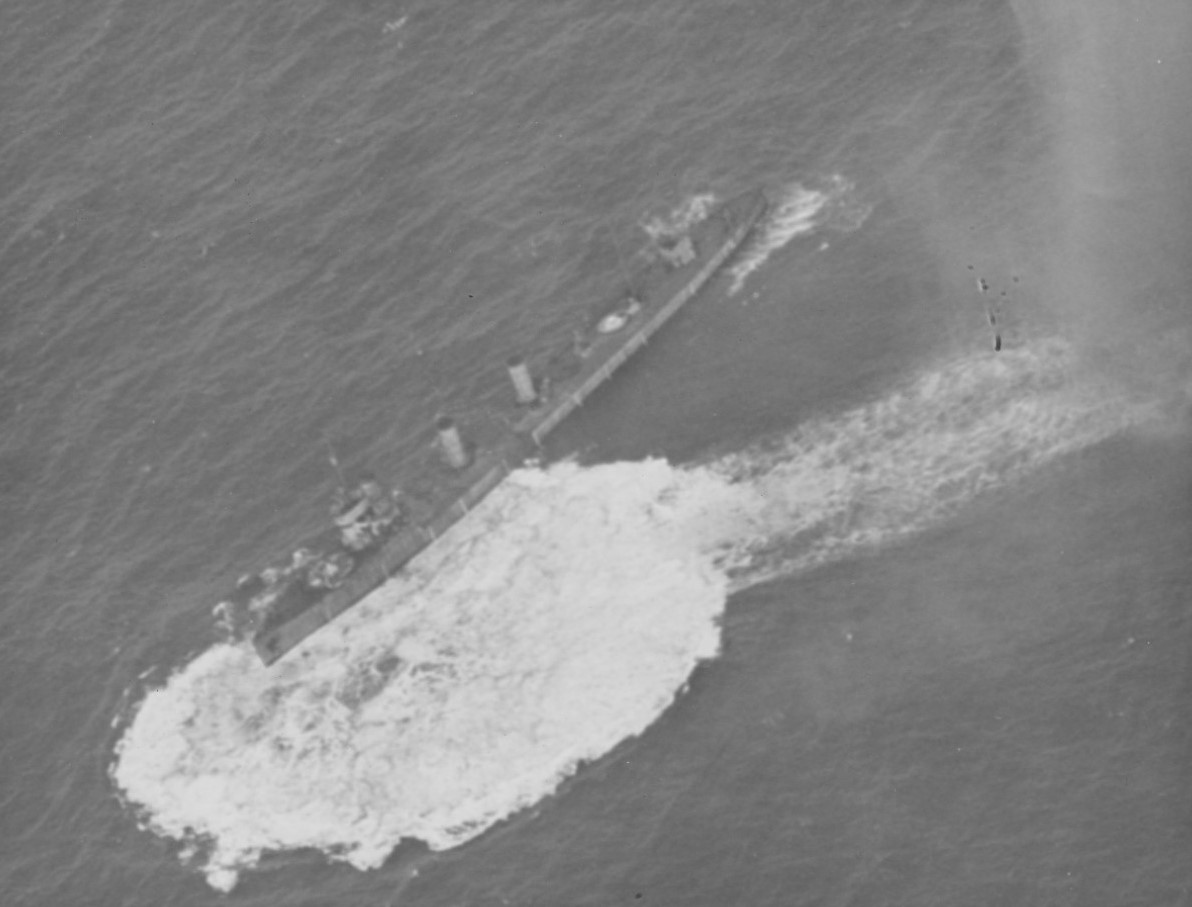
G-102 under attack
Two weeks later, the live bombing tests began with the ex-German destroyer G-102, which had been handed over to Mitchell to use as a demonstration of his proposed tactics for sinking ships. The first stage involved independent runs at 200' by S.E.5 biplanes dropping single 25-lb fragmentation bombs, intended to kill the ship's AA gunners. In practice, this probably wouldn't have worked nearly as well, as the low-altitude passes would have been hilariously vulnerable to said gunners. The next phase, DH.4s dropping 100 lb bombs from 1500', saw no hits. Lastly, MB-2s were dispatched with 300 lb bombs. The first hit did little damage, but the second had the destroyer settling quickly by the bow. A third hit destroyed what watertight integrity remained, and G-102 went down within a minute. The total time for the whole attack was just over an hour.
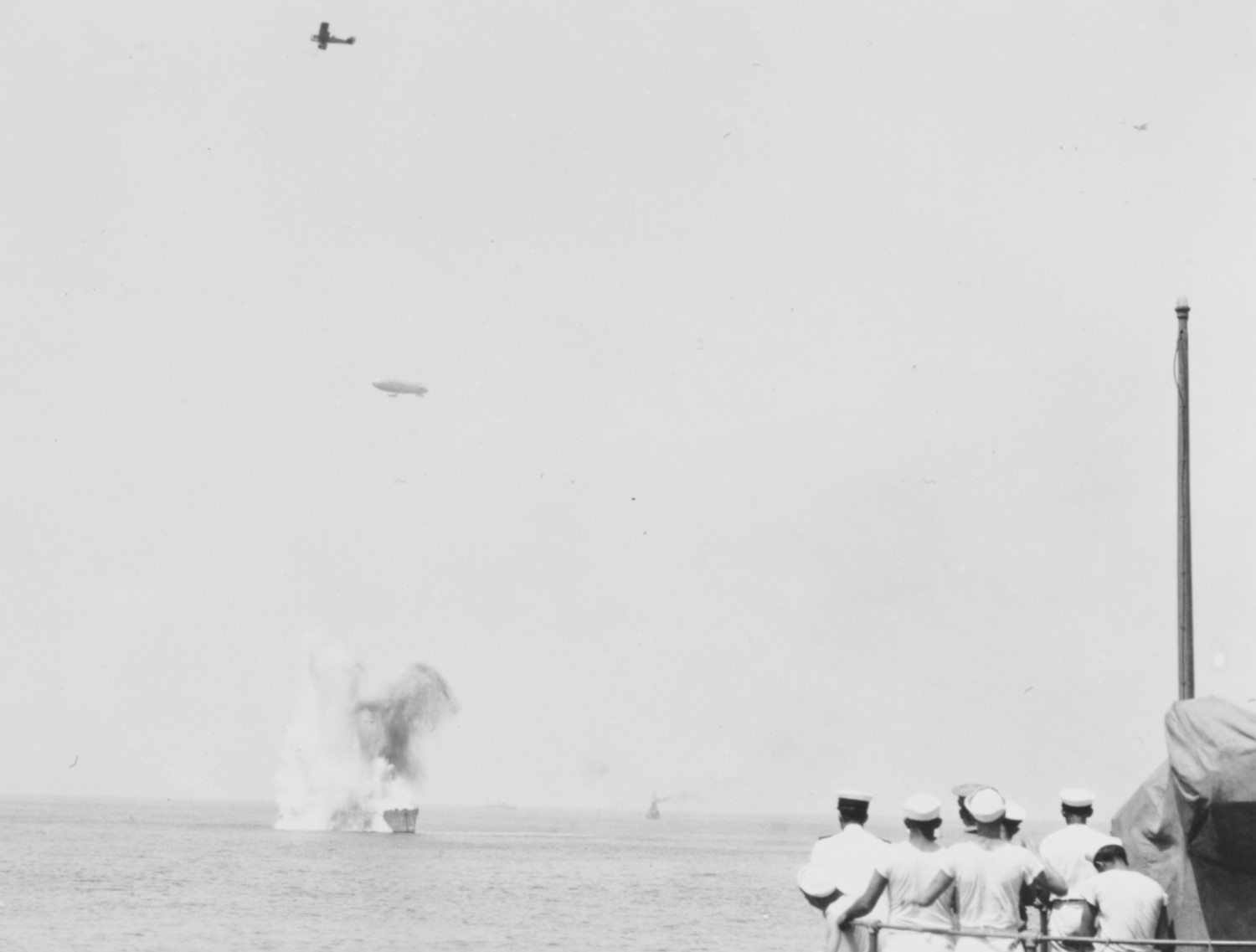
Sailors watch as Frankfort is bombed
Five days later, it was the turn of light cruiser Frankfort. The first wave were Army and Navy planes taking turns to drop 250 and 300 lb bombs. The observers went aboard to evaluate the damage, which showed that these bombs usually did damage over about a 30' radius, but could be stopped by a single fairly heavy deck. Another attack with similar bombs was launched when the observers withdrew, followed by 520 lb demolition bombs. The observers returned aboard, but were forced to withdraw early after a group of six Army Air Corps bombers appeared overhead. They had taken off without authorization, and didn't have enough fuel to loiter. Their 600-pound demolition bombs scored two direct hits, but before the inspectors could go aboard, the eleventh bomb fell into the water alongside, and when the spray cleared, Frankfort was visibly settling.
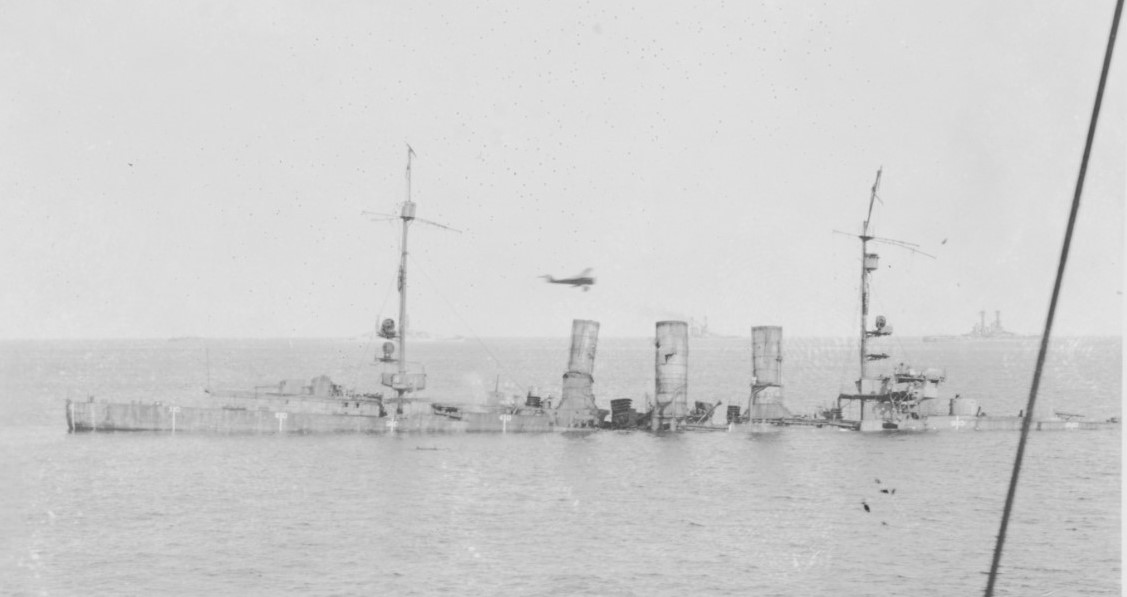
Frankfort about to go under
But all of this was merely warm-up for the main event. On July 20th and 21st, America's best military aviators would go up against a ship that had once been the pride of the High Seas Fleet,4 and the world would apparently learn if battleships were actually vulnerable to air attack.5 We'll pick up the story there next time.
1 Chief of Naval Operations, the uniformed head of the Navy. ⇑
2 This did not mean that the USN abolished its aviation program entirely, as is occasionally claimed. It kept existing, but on a smaller scale, as the Navy focused on the capital ship program that had been interrupted by the war. This wasn't even particularly short-sighted, as battleships took a long time to build and would stay useful for decades, while airplanes were cheap and would be obsolete quickly. ⇑
3 I'm not sure why it was built this way, but the information is from the extensively-researched book Billy Mitchell's War with the Navy, which was my main source for this series. Based on other information, it didn't always pack up after 2 hours, but it's hard to blame Mitchell for not wanting his men to spend a bunch of time cruising offshore with unreliable fuel pumps when the consequence was a ditching instead of landing in a field somewhere. ⇑
4 Naval Gazing's editor would like to note that no study of the quality of aviators involved in the tests or the degree of pride with which various ships of the High Seas Fleet were held has been made. ⇑
5 Spoilers: The answer still wouldn't be clear-cut 20 years later. ⇑

Comments
So being naturally fascinated with the concept of a rawhide gear, I did a little digging, first turning up a post on a Model T owners board where some suggested that the goal of rawhide gears might have been vibration control and a need for less lubrication. The more interesting revelation is that rawhide gears are still being made.
TIL leather gears are a thing.
Seems like some early Fords used them:
http://www.mtfca.com/discus/messages/411944/414591.html?1389702798
And there are still companies making buffalo-peel gears:
https://www.osborne-tech.com/rawhide-gears.html
They cite vibration damping, noise reduction and sacrificial failure as advantages. Not sure if any of those are what you want on a bomber.
Noise reduction, probably not, but I could see vibration damping as a reason.
Although in retrospect (I just finished writing part four a couple days ago), I'm starting to doubt that particular factoid. For one thing, it seems incredibly weird to build an airplane with 400 miles of range and a 92 mph cruise if the engines could only possibly last 2 hours. Not to mention several cases mentioned in the book of MB-2s/NBS-1s flying longer missions. I suspect that the actual issue was that after 2 hours the gear became increasingly unreliable, and Mitchell quite reasonably didn't want his planes having to ditch if there were problems.
@Lambert I see we followed the same trail.
@bean I wouldn't be surprised if at that point in aviation history minor failures that forced the pilot to land were seen as a normal part of the experience, with the idea being the pilot just landed in a field or on a road and did the repairs to get airborne again.
Minor failures that forced the pilot to land in a field or on a road to make minor repairs were very definitely considered normal in that part of aviation history; hence the perception of great heroism on the part of pilots who flew across oceans or trackless wilderness. Rather like pulling over to the side of the road to fix a flat tire, in the days before steel-belted radial tires. Just a thing that you had to do from time to time.
...When I was stationed at Langley AFB VA in the late Eighties, my work area - 1EMS Munitions Storage Area - wasn't far from where Mitchell's MB-2s were loaded. The big bombs he dropped were custom made from sewer pipe and sheet metal, with the HE filler actually mixed, melted, and poured on site there at Langley. Apparently nobody is sure exactly where this work was done; no records were kept. It's thought that the work was done somewhere in what's still known as the LTA (lighter-than-air) Area - if you go to Wiki's page on Langley, you'll see a pic of Langley in the 20's with the LTA hangar in the upper center of the pic. That's now the approximate location of Eaglewood Golf Course.
A bunch of us USAF history nerds actually pitched the idea of a reconstruction of the area nearby (and renaming TAC HQ as Mitchell Hall), but it got swatted down pretty quickly and with remarkably vague excuses. Was told some years later that for all the 'Father of the Air Force' legend, the USAF reacts to Billy Mitchell like the Devil to holy water. They have never considered him an exemplar for their officer corps, and if they could they'd completely erase him from their history.
Mike
@Chuck
What John said is essentially what I was thinking when I wrote that. A dodgy rawhide gear in the fuel pump is mildly annoying overland, and a serious problem 100 miles out to sea. This was an era when "land in a random field" was just a thing that pilots did.
@Mike
They probably figure that pilots are egotistical enough without Mitchell being held up as an exemplar. He did a good job in France, marred by some truly horrible clashes with other officers, and after he got back, he became increasingly arrogant, until the fateful court-martial. I'm all in favor of ignoring him. In practice, he mostly just caused bickering.
Also, there are more pictures of the planes being loaded on history.navy.mil, which might be of interest to you.
@Bean
Fun fact, Orville Wright wrote an editorial for Aviation Week on the question of whether or not there should be airports. He was con:
https://aviationweek.com/blog/1919-orville-wright-future-civil-flying
note: that link might not work for a couple days, we're migrating to a new website.
@Mike Kozlowski - Interesting. My father was in from 63-67, working on B-52s, and as recently as a few weeks ago still believed a bunch of History Channel-level misinformation about Mitchell being a "visionary" and a heroic martyr who nobly sacrificed his own career, knowing that the Hidebound Old Guard (mostly in the Navy) would never willingly give up their perquisites but believing that a new generation of air-minded officers (mostly in the Army) would eventually pick up the torch, and that as such Mitchell more than anyone else was responsible for Allied victory in WW2.* So I wonder if that difference in attitude toward Mitchell represents a cultural shift over time, a difference between officers and enlisted men, or just my father's own idiosyncratic insanity.